 Assembling the Wal-Mart Huffy bicycle was fairly straightforward. When I was a kid, USA-built Huffy bikes were pretty crappy. They were ok if you rode them like a normal bicycle but jumping or rough scrambling would break the frames. Huffys are made in China now and the frame welds look attractive and strong. From the wheels to the handlebars the whole bike looks better than the Huffys of yesteryear. Which is a good thing because I’m strapping a 2 horsepower motor into the frame of the Huffy to see what she’ll do.
Assembling the Wal-Mart Huffy bicycle was fairly straightforward. When I was a kid, USA-built Huffy bikes were pretty crappy. They were ok if you rode them like a normal bicycle but jumping or rough scrambling would break the frames. Huffys are made in China now and the frame welds look attractive and strong. From the wheels to the handlebars the whole bike looks better than the Huffys of yesteryear. Which is a good thing because I’m strapping a 2 horsepower motor into the frame of the Huffy to see what she’ll do.
As per the Bicycle Motor Builders Facebook page I packed heavy-duty wheel bearing grease into both wheels. This is a pretty simple job as you only need to loosen the bearing cones a bit to push grease into the gap.
Once the bearings were greased I fitted the rear sprocket onto the wheel. This is the cheesiest part of the install as the sprocket sandwiches the spokes between 2 rubber spacers. Keeping the sprocket centered on the wheel is critical so I used a hole saw blade wrapped in duct tape as a mandrel.
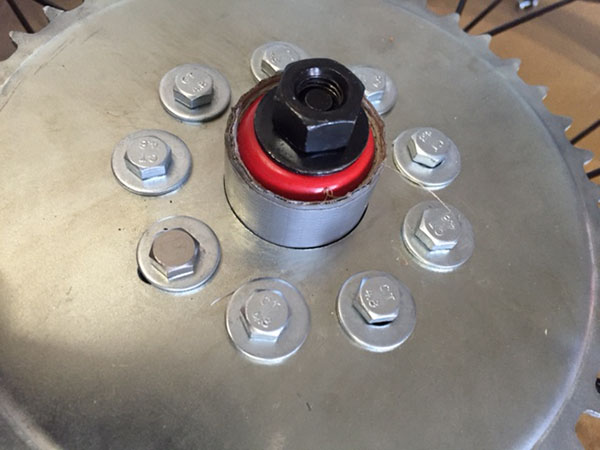 The job went well but when I went to spin the wheel to check the sprocket for square the wheel wouldn’t rotate on the axle. As it turns out a small metal dust cap got squeezed between the sprocket center and the hub, locking the wheel.
The job went well but when I went to spin the wheel to check the sprocket for square the wheel wouldn’t rotate on the axle. As it turns out a small metal dust cap got squeezed between the sprocket center and the hub, locking the wheel.
 I dismantled the mess and removed the dust cap. After reinstalling and truing the sprocket I trimmed the dust cap to fit inside the center hole of the sprocket. The bolts for the sprocket are long but you’ll need that length to get the nuts started. One of the 9 bolts in my kit was a bit too short, or I lost the right one so I used a bolt from the junk drawer after cutting it to length. The sprocket to hub deal looks like poo-poo but the sprocket seems like it is attached well and no one complains about it online. We will see.
I dismantled the mess and removed the dust cap. After reinstalling and truing the sprocket I trimmed the dust cap to fit inside the center hole of the sprocket. The bolts for the sprocket are long but you’ll need that length to get the nuts started. One of the 9 bolts in my kit was a bit too short, or I lost the right one so I used a bolt from the junk drawer after cutting it to length. The sprocket to hub deal looks like poo-poo but the sprocket seems like it is attached well and no one complains about it online. We will see.
 The sprocket holes are elongated to allow for different wheel hubs but I didn’t like the bit of hole showing so I put ¼” washers on the bolts to conceal the gap. This looks great except that the rear brake stay arm now came in contact with the bolt heads. It’s that tight! A quick realignment in the vise and the arm cleared the bolt heads.
The sprocket holes are elongated to allow for different wheel hubs but I didn’t like the bit of hole showing so I put ¼” washers on the bolts to conceal the gap. This looks great except that the rear brake stay arm now came in contact with the bolt heads. It’s that tight! A quick realignment in the vise and the arm cleared the bolt heads.
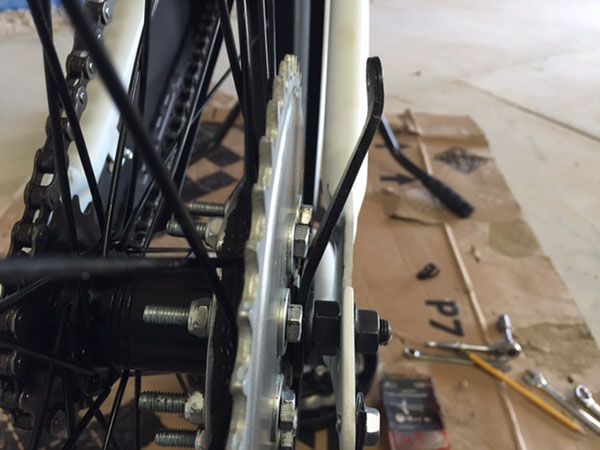 Of course when you alter one item it causes a chain reaction down stream. The re-bent brake stay arm no longer fit between the axle side-plates so I had to make a new clamp to stop the brake stay from rotating under braking. The stock clamp was super thin steel. I figured with 2hp pushing the Huffy to high speeds the clamp needed to be a bit heavier.
Of course when you alter one item it causes a chain reaction down stream. The re-bent brake stay arm no longer fit between the axle side-plates so I had to make a new clamp to stop the brake stay from rotating under braking. The stock clamp was super thin steel. I figured with 2hp pushing the Huffy to high speeds the clamp needed to be a bit heavier.
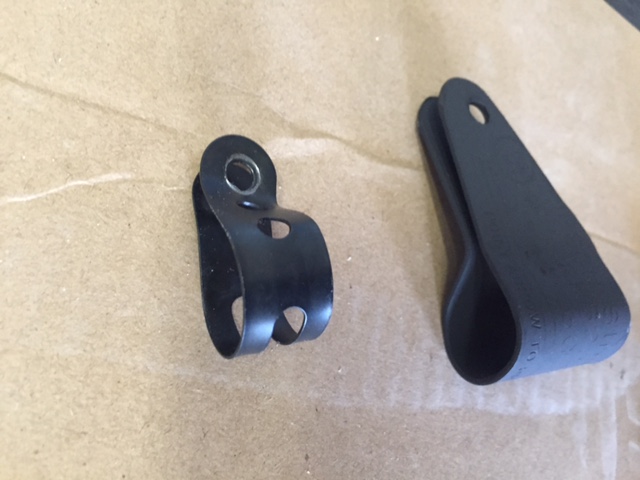 The bolt on the stock arm was a tiny #10. That didn’t look so hot to me so I bumped it up to a ¼” size. And since I couldn’t wait for the paint to dry the clamp got a little scratched up.
The bolt on the stock arm was a tiny #10. That didn’t look so hot to me so I bumped it up to a ¼” size. And since I couldn’t wait for the paint to dry the clamp got a little scratched up.
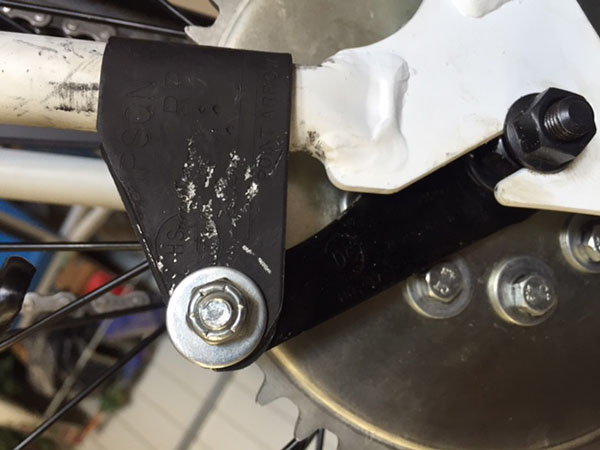 With the rear wheel fitted back into the frame I started test fitting parts. The rear motor mount clamps securely to the seat post but this frame has a large diameter front tube that is too wide for the bolt centers of the front mount. The motor kit comes with a U-bolt and clamp setup for wide front tubes. I could make it work but it looks horrible and most likely will rattle apart. I’ll have to rethink the front mount. The carb is a little close to the top tube. I will probably run the throttle cable inside the top tube to give it a larger radius bend. The chain run will determine final motor placement.
With the rear wheel fitted back into the frame I started test fitting parts. The rear motor mount clamps securely to the seat post but this frame has a large diameter front tube that is too wide for the bolt centers of the front mount. The motor kit comes with a U-bolt and clamp setup for wide front tubes. I could make it work but it looks horrible and most likely will rattle apart. I’ll have to rethink the front mount. The carb is a little close to the top tube. I will probably run the throttle cable inside the top tube to give it a larger radius bend. The chain run will determine final motor placement.
That’s the progress I’ve made to date. The white frame with black trim looks sharp. The bike feels balanced and not heavy in the least.


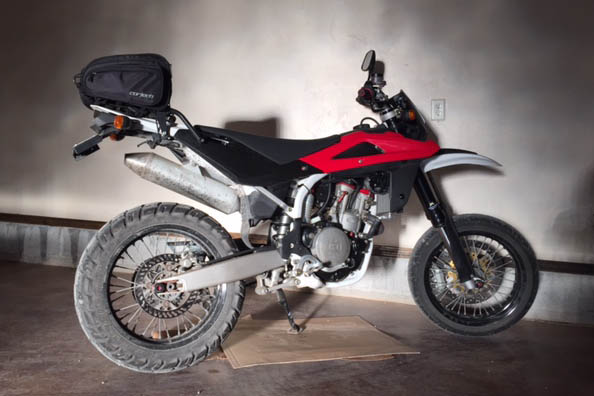 Berk and I have a busy ExhaustNotes.us August planned. You’ve already read about his Three Flags tour on the new, untested RX4 Zongshen and I’m finalizing plans for an assault on the Bonneville speed trials. No, I won’t be racing Mini Moto Madness but seeing as how I’ve never been to the salt for Speed Week and I’m not getting any younger I figured this is the year.
Berk and I have a busy ExhaustNotes.us August planned. You’ve already read about his Three Flags tour on the new, untested RX4 Zongshen and I’m finalizing plans for an assault on the Bonneville speed trials. No, I won’t be racing Mini Moto Madness but seeing as how I’ve never been to the salt for Speed Week and I’m not getting any younger I figured this is the year. It wasn’t really my idea. It was Mike’s. Mike lives on a ranch in Carrizozo, New Mexico. I met Mike a hundred miles north at a little restaurant in Willard. I wanted shredded beef tacos but the restaurant was out of beef. I didn’t want to use up my private stash so I went back to the menu. That’s when Mike piped up and told me to try the pork tacos. I had three pork tacos with beans and rice. I recommend them highly.
It wasn’t really my idea. It was Mike’s. Mike lives on a ranch in Carrizozo, New Mexico. I met Mike a hundred miles north at a little restaurant in Willard. I wanted shredded beef tacos but the restaurant was out of beef. I didn’t want to use up my private stash so I went back to the menu. That’s when Mike piped up and told me to try the pork tacos. I had three pork tacos with beans and rice. I recommend them highly.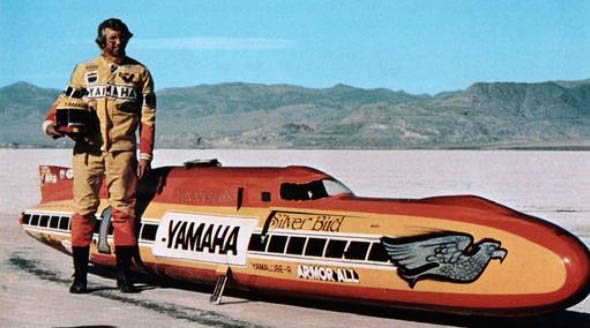 Mike and I will be at the KOA in West Wendover from August 12th to the 14th. If you’re around town stop by and visit us. Bring beer if you want us to be happy to see you. Our campsite is good for up to six people. I’ll have coffee. There will be fire. It’ll be fun. You’ll see.
Mike and I will be at the KOA in West Wendover from August 12th to the 14th. If you’re around town stop by and visit us. Bring beer if you want us to be happy to see you. Our campsite is good for up to six people. I’ll have coffee. There will be fire. It’ll be fun. You’ll see.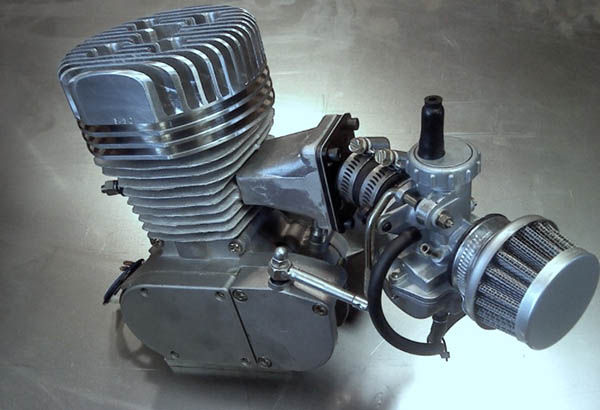 It’s sort of futile hopping up a 2-horsepower bicycle engine because the rear sprocket-to-spoke connection is so weak. Spindly running gear has never stopped a hot-rodder before and bicycle motor aficionados are hot-rodders to the bone. While Mini Motor Madness is on hold awaiting parts I wandered into the wonderfully inexpensive world of high performance engine goodies.
It’s sort of futile hopping up a 2-horsepower bicycle engine because the rear sprocket-to-spoke connection is so weak. Spindly running gear has never stopped a hot-rodder before and bicycle motor aficionados are hot-rodders to the bone. While Mini Motor Madness is on hold awaiting parts I wandered into the wonderfully inexpensive world of high performance engine goodies.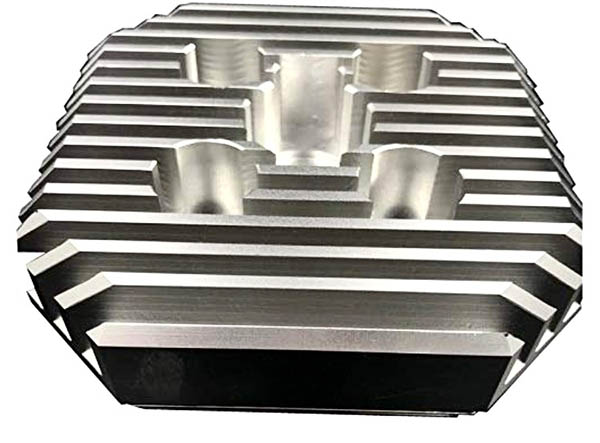 The bog standard bicycle motor is not heavily finned. Overheating doesn’t seem to be a problem but with an aluminum bore and a recommended 16:1 oil/gas ratio it is clearly something to watch out for. Like all parts for these little motors there are a zillion sellers insuring fierce competition and low prices for the thrifty Rodder. The increase in the quantity of cylinder head metal alone would be helpful in keeping things square and dampening noise. The large, deep fins must do a great job of lowering cylinder temperatures. A cooler cylinder means you’ll be able to run a leaner mixture without melting internal parts. Less oil means more room for fuel going through those tiny orifices in your carb. It’s like changing jet size by playing with the fuel ratio. Any compression increases would probably be nullified by the low-grade gasoline cheap mini motor fans cannot help but use.
The bog standard bicycle motor is not heavily finned. Overheating doesn’t seem to be a problem but with an aluminum bore and a recommended 16:1 oil/gas ratio it is clearly something to watch out for. Like all parts for these little motors there are a zillion sellers insuring fierce competition and low prices for the thrifty Rodder. The increase in the quantity of cylinder head metal alone would be helpful in keeping things square and dampening noise. The large, deep fins must do a great job of lowering cylinder temperatures. A cooler cylinder means you’ll be able to run a leaner mixture without melting internal parts. Less oil means more room for fuel going through those tiny orifices in your carb. It’s like changing jet size by playing with the fuel ratio. Any compression increases would probably be nullified by the low-grade gasoline cheap mini motor fans cannot help but use.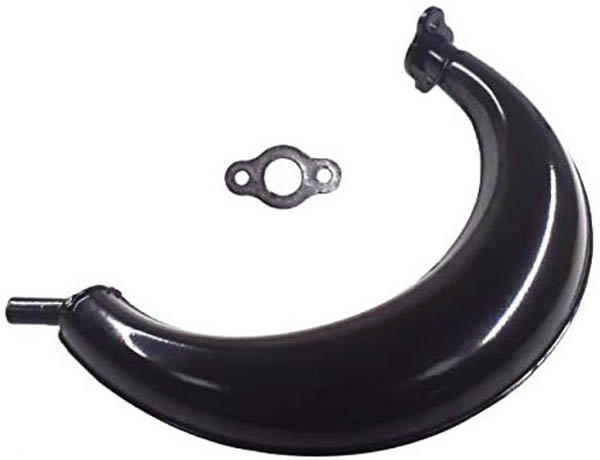 There is even more selection when it comes to exhaust systems. Two-piece, welded seam expansion chambers are the most numerous and various finishes are on offer to suit anyone’s budget. Expansion chambers are like free horsepower in that most times you won’t need to do much carburetor work to get the things in tune. Using a combination of black magic and sonic waves, expansion chambers most often move the powerband higher into the rev range and will allow the motor to spin up another few thousand RPM. Those extra RPM’s are a good thing for drafting Indian FTR750s on the long straightaways at The Sacramento Mile but a chambered motor may not get you over that last vertical shelf of a long, rocky hill climb. It’s the one where you don’t dare downshift for fear of losing momentum.
There is even more selection when it comes to exhaust systems. Two-piece, welded seam expansion chambers are the most numerous and various finishes are on offer to suit anyone’s budget. Expansion chambers are like free horsepower in that most times you won’t need to do much carburetor work to get the things in tune. Using a combination of black magic and sonic waves, expansion chambers most often move the powerband higher into the rev range and will allow the motor to spin up another few thousand RPM. Those extra RPM’s are a good thing for drafting Indian FTR750s on the long straightaways at The Sacramento Mile but a chambered motor may not get you over that last vertical shelf of a long, rocky hill climb. It’s the one where you don’t dare downshift for fear of losing momentum. No matter how well designed, reed valves are an obstruction in the intake tract of a mini motor. They make up for this by stopping the constant re-carburation of the fuel mixture due to the reverse air pulses created by a sloppy piston port intake. Reeds also allow huge holes in the piston skirt to extend the degrees of rotation a crankcase can draw in the fuel/air mixture. Since nothing can blow back out the carburetor, an extra transfer port can be carved into the intake side of the cylinder wall. Combined with an expansion chamber, reed valves can more than make up for blocking the intake tract. Even without all the piston/transfer port butchery low speed running is improved by the cleaner intake signal.
No matter how well designed, reed valves are an obstruction in the intake tract of a mini motor. They make up for this by stopping the constant re-carburation of the fuel mixture due to the reverse air pulses created by a sloppy piston port intake. Reeds also allow huge holes in the piston skirt to extend the degrees of rotation a crankcase can draw in the fuel/air mixture. Since nothing can blow back out the carburetor, an extra transfer port can be carved into the intake side of the cylinder wall. Combined with an expansion chamber, reed valves can more than make up for blocking the intake tract. Even without all the piston/transfer port butchery low speed running is improved by the cleaner intake signal. With all the excitement focused on pumping more air through your mini motor you’ll find the stock carb wanting. Large carburetors are really cheap online so why not go all the way? For less than $200 you can convert your mild-mannered, reliable mini motor into an atomic bomb ready to explode between your legs at any moment. Sure it’s stupid. Sure you will burn more fuel and annoy all you neighbors, but when have those things mattered to a Rodder?
With all the excitement focused on pumping more air through your mini motor you’ll find the stock carb wanting. Large carburetors are really cheap online so why not go all the way? For less than $200 you can convert your mild-mannered, reliable mini motor into an atomic bomb ready to explode between your legs at any moment. Sure it’s stupid. Sure you will burn more fuel and annoy all you neighbors, but when have those things mattered to a Rodder?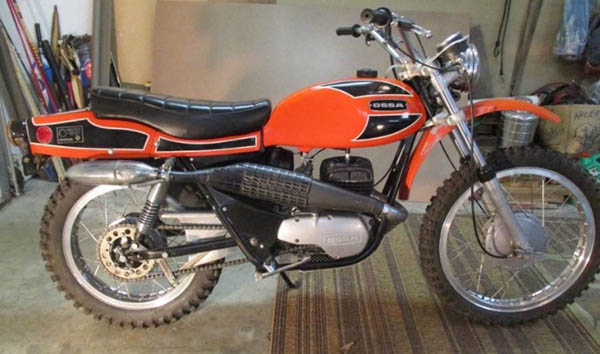 I must have been around 15 years old the first time I saw an Ossa Pioneer. It was at Haines City motocross track. Mike Mills’ mom was divorced and her boyfriend gave us a ride way out to Chrome Avenue in his boat tail Buick Riviera . What a car! The Riviera smelled great inside not only because it was new, but because the boyfriend wore cologne. This was the first time I had been around a grown man that used cologne. All the other adult men I had known up to that point smelled like dirty socks. I smell like dirty socks right now.
I must have been around 15 years old the first time I saw an Ossa Pioneer. It was at Haines City motocross track. Mike Mills’ mom was divorced and her boyfriend gave us a ride way out to Chrome Avenue in his boat tail Buick Riviera . What a car! The Riviera smelled great inside not only because it was new, but because the boyfriend wore cologne. This was the first time I had been around a grown man that used cologne. All the other adult men I had known up to that point smelled like dirty socks. I smell like dirty socks right now. Mostly Bultacos and Maicos were racing in Haines City back then but one guy had an Ossa Pioneer with the lights removed. The rider was good. He would get crossed up over the jumps and finished in the top 5 against real race bikes. I loved how the rear fender blended into the bike. That fiberglass rear section had a small storage area inside. One of the bike magazines of the era tossed a loose spark plug in the storage and went scrambling. The plug beat a hole in the rear fender and they had the nerve to bitch about it. Hell, I knew at 10 that you have to wrap stuff in rags on a motorcycle.
Mostly Bultacos and Maicos were racing in Haines City back then but one guy had an Ossa Pioneer with the lights removed. The rider was good. He would get crossed up over the jumps and finished in the top 5 against real race bikes. I loved how the rear fender blended into the bike. That fiberglass rear section had a small storage area inside. One of the bike magazines of the era tossed a loose spark plug in the storage and went scrambling. The plug beat a hole in the rear fender and they had the nerve to bitch about it. Hell, I knew at 10 that you have to wrap stuff in rags on a motorcycle.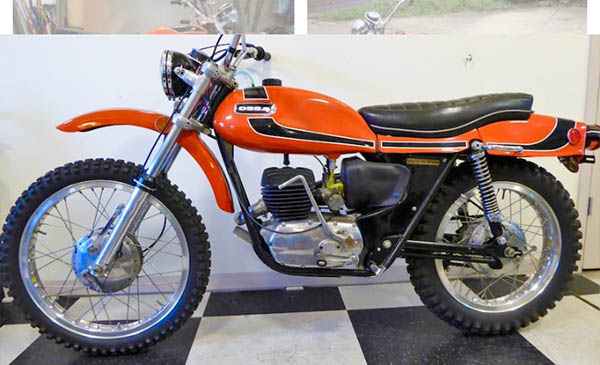 It rains most everyday in Florida and it started pouring. The races kept going for a while but finally had to be called because it was a deluge. You could hardly see to walk. There was no cover so we huddled in the leeward side of the ticket stand out by the entrance. It rained harder, the wind was howling. Wearing only shorts and T-shirts we were getting colder and colder. My lips were turning blue, man.
It rains most everyday in Florida and it started pouring. The races kept going for a while but finally had to be called because it was a deluge. You could hardly see to walk. There was no cover so we huddled in the leeward side of the ticket stand out by the entrance. It rained harder, the wind was howling. Wearing only shorts and T-shirts we were getting colder and colder. My lips were turning blue, man. I know what you’re thinking: Yet another ExhaustNotes.us project to be half completed and then shunted aside to gather dust in Tinfiny’s ferrous expanses. I can’t blame you, that’s been the pattern throughout my life. It seems like I get a lot done but I don’t get anything Done with a capital “D.” My shed is littered with the semi-cool and the semi-finished.
I know what you’re thinking: Yet another ExhaustNotes.us project to be half completed and then shunted aside to gather dust in Tinfiny’s ferrous expanses. I can’t blame you, that’s been the pattern throughout my life. It seems like I get a lot done but I don’t get anything Done with a capital “D.” My shed is littered with the semi-cool and the semi-finished.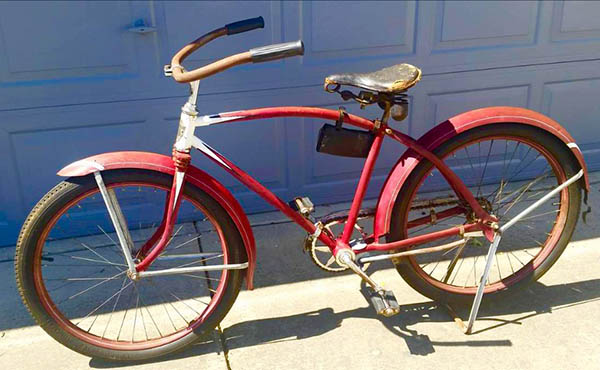 I started looking at new bikes, which led me to China’s little mom & pop store, Wal-Mart. Wally-World has a sweet 26” Huffy standard style bike for only $88 delivered to my door. Just think: new tires, shiny paint and no rust anywhere! At that low-low price why bother with garage sales and repairing trashed bicycles? So I took the plunge on a white-framed example that should look striking combined with The Jewel’s black fuel tank and chain guard. Assembly is not included with mail-order bikes but would you want some ham-fisted Wal-Mart garden center employee messing with your brand new ride?
I started looking at new bikes, which led me to China’s little mom & pop store, Wal-Mart. Wally-World has a sweet 26” Huffy standard style bike for only $88 delivered to my door. Just think: new tires, shiny paint and no rust anywhere! At that low-low price why bother with garage sales and repairing trashed bicycles? So I took the plunge on a white-framed example that should look striking combined with The Jewel’s black fuel tank and chain guard. Assembly is not included with mail-order bikes but would you want some ham-fisted Wal-Mart garden center employee messing with your brand new ride?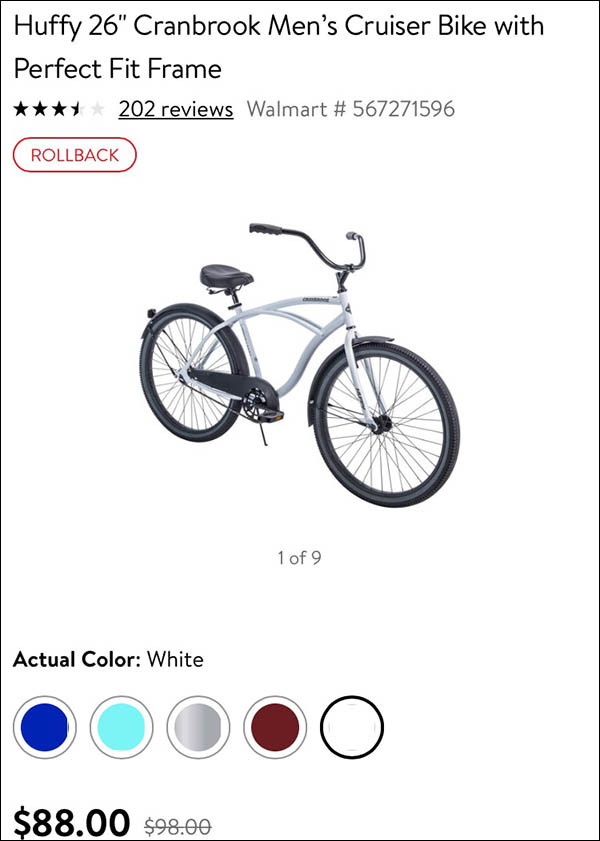 I’ve also tapped into a knowledge base at the Facebook page, Motorized Bicycle Builders. These gnarly veterans of the tiny-engine wars have seen it all and done it all. They have given the $88 Huffy two thumbs up providing I scrap the stock wheels, buy heavy-duty replacements, strip off the fenders and add a front brake. Unfortunately, this is valuable information that I will have to learn the hard way.
I’ve also tapped into a knowledge base at the Facebook page, Motorized Bicycle Builders. These gnarly veterans of the tiny-engine wars have seen it all and done it all. They have given the $88 Huffy two thumbs up providing I scrap the stock wheels, buy heavy-duty replacements, strip off the fenders and add a front brake. Unfortunately, this is valuable information that I will have to learn the hard way. Amazon has pages and pages of bicycle motors and most of them look like the one I bought. Prices range from $90 to $200 for what looks like the same exact thing. There are 50cc kits and 80cc kits so I opted for the 80cc. YouTubers will tell you the 80cc engine measures out to around 60cc, which is a good thing because the engine fins don’t look large enough to cool a bigger bore. You can also buy 4-stroke kits but then you’d be no friend of mine. The main reason I sprung for this one was because it came with a chrome exhaust pipe.
Amazon has pages and pages of bicycle motors and most of them look like the one I bought. Prices range from $90 to $200 for what looks like the same exact thing. There are 50cc kits and 80cc kits so I opted for the 80cc. YouTubers will tell you the 80cc engine measures out to around 60cc, which is a good thing because the engine fins don’t look large enough to cool a bigger bore. You can also buy 4-stroke kits but then you’d be no friend of mine. The main reason I sprung for this one was because it came with a chrome exhaust pipe.
 The transmission is a one speed, manual clutch set up and you’ll get the throttle, throttle cable with a matching grip for the left side. A clutch lever with a push button latch allows you to disengage and lock the clutch for pedaling the bike as normal. Included on the throttle housing is a kill button that plugs into the ignition coil. Wiring couldn’t be easier as there are only two wires and I’m guessing it doesn’t matter how they connect.
The transmission is a one speed, manual clutch set up and you’ll get the throttle, throttle cable with a matching grip for the left side. A clutch lever with a push button latch allows you to disengage and lock the clutch for pedaling the bike as normal. Included on the throttle housing is a kill button that plugs into the ignition coil. Wiring couldn’t be easier as there are only two wires and I’m guessing it doesn’t matter how they connect. The hokiest part of the conversion is attaching the rear sprocket. Your average bicycle has no way to connect a rear sprocket so you have to use two rubber discs, three steel plates and the sprocket to sandwich the spokes. This seems like a bad idea from many angles but YouTubers say it works ok. Centering the sprocket is critical along with adjusting run-out. A flimsy looking chain idler pulley is included to keep the included chain from sawing through the lower frame rail but again, the Tubers say it ends up working well. Careful adjustment of the motor in the frame may eliminate the need for an idler. That’s what I’ll be shooting for.
The hokiest part of the conversion is attaching the rear sprocket. Your average bicycle has no way to connect a rear sprocket so you have to use two rubber discs, three steel plates and the sprocket to sandwich the spokes. This seems like a bad idea from many angles but YouTubers say it works ok. Centering the sprocket is critical along with adjusting run-out. A flimsy looking chain idler pulley is included to keep the included chain from sawing through the lower frame rail but again, the Tubers say it ends up working well. Careful adjustment of the motor in the frame may eliminate the need for an idler. That’s what I’ll be shooting for. When I say complete I mean complete. You’ll get a chain guard, a petcock, a sparkplug and even fuel hose. Unless you want upgraded components there is really nothing else to buy.
When I say complete I mean complete. You’ll get a chain guard, a petcock, a sparkplug and even fuel hose. Unless you want upgraded components there is really nothing else to buy. The kit comes with a cool teardrop gas tank that bolts to the top frame tube. The tank comes glossy black and would look great sitting atop an 80 cubic-inch Indian flathead drag bike. Handwrite “The Jewel” on the side of the tank in that yellow junkyard paint and you will win all the bike nights.
The kit comes with a cool teardrop gas tank that bolts to the top frame tube. The tank comes glossy black and would look great sitting atop an 80 cubic-inch Indian flathead drag bike. Handwrite “The Jewel” on the side of the tank in that yellow junkyard paint and you will win all the bike nights. The sheer quantity of parts for $108 makes me happy (a fringed T-shirt for a Harley costs $100). For me, it almost doesn’t matter it the thing works or not. I like looking at all the new pieces. My next step is to find an older, one speed, balloon-tired 26-inch bicycle for a host. One with curving frame tubes and chrome fenders. I’ll let you know when I find it and I’ll do a story on the install and road test of the little motor.
The sheer quantity of parts for $108 makes me happy (a fringed T-shirt for a Harley costs $100). For me, it almost doesn’t matter it the thing works or not. I like looking at all the new pieces. My next step is to find an older, one speed, balloon-tired 26-inch bicycle for a host. One with curving frame tubes and chrome fenders. I’ll let you know when I find it and I’ll do a story on the install and road test of the little motor.
 My favorite Monkee episode (because of the motorcycles) opens with Micky Dolenz singing Going Down. Micky was the drummer and the best singer in the band and he nails Going Down’s proto-rap feel. From there, the show falls apart beautifully with motorcycles, a chalkboard Hog reference, dust and pretty girls beating up The Monkees.
My favorite Monkee episode (because of the motorcycles) opens with Micky Dolenz singing Going Down. Micky was the drummer and the best singer in the band and he nails Going Down’s proto-rap feel. From there, the show falls apart beautifully with motorcycles, a chalkboard Hog reference, dust and pretty girls beating up The Monkees. The monkees form their own biker gang called The Chickens and during a race between the bad guys more cinema magic is revealed. There is a plot to all this but it’s mostly there to keep the boys from walking off the set. At the end of the show peace and love is restored, Triumphs and Harleys get along together and you’re filled with hope for the future.
The monkees form their own biker gang called The Chickens and during a race between the bad guys more cinema magic is revealed. There is a plot to all this but it’s mostly there to keep the boys from walking off the set. At the end of the show peace and love is restored, Triumphs and Harleys get along together and you’re filled with hope for the future. This was situation comedy television unlike any that came before. It was random. It exposed the fakery. Jack Benny’s old TV show was The Monkees spirit guide. After 2 years the Monkees show was cancelled. The Monkees became a real band and had many hits written and preformed by themselves. Which just goes to show you that living a lie sometimes leads to success.
This was situation comedy television unlike any that came before. It was random. It exposed the fakery. Jack Benny’s old TV show was The Monkees spirit guide. After 2 years the Monkees show was cancelled. The Monkees became a real band and had many hits written and preformed by themselves. Which just goes to show you that living a lie sometimes leads to success.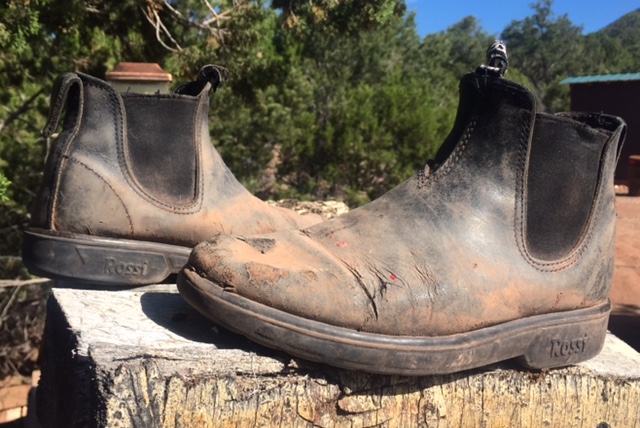 We’re starting a new feature here on ExhaustNotes.us called Tested To Destruction. TTD will be a life-cycle product test from purchase to the dumpster. You’ll not find so complete a product test anywhere else on the Internet, go ahead and look around. Due to the long test periods involved some of the products may be discontinued and no longer available. There’s not a lot we can do about that. One other note: By definition we are testing to destruction so all products will fail in the end. It happens to the best. Nothing lasts forever.
We’re starting a new feature here on ExhaustNotes.us called Tested To Destruction. TTD will be a life-cycle product test from purchase to the dumpster. You’ll not find so complete a product test anywhere else on the Internet, go ahead and look around. Due to the long test periods involved some of the products may be discontinued and no longer available. There’s not a lot we can do about that. One other note: By definition we are testing to destruction so all products will fail in the end. It happens to the best. Nothing lasts forever.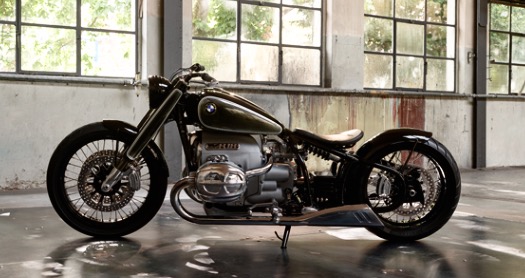 BMW’s R18 Concept is that rare thing in the motorcycle world: a BMW that doesn’t look like the contents of the junk drawer in your kitchen. Most of the GS series have a rubber band, plastic-handled corkscrew and expired AA batteries look about them. Cluttered and stolen-valor-military-ish, the big GS’s take a concerted effort to look at without smirking and feeling superior. Except for the very first ones. The early GS800 was much cleaner and actually was pretty good off road.
BMW’s R18 Concept is that rare thing in the motorcycle world: a BMW that doesn’t look like the contents of the junk drawer in your kitchen. Most of the GS series have a rubber band, plastic-handled corkscrew and expired AA batteries look about them. Cluttered and stolen-valor-military-ish, the big GS’s take a concerted effort to look at without smirking and feeling superior. Except for the very first ones. The early GS800 was much cleaner and actually was pretty good off road. Concept bikes are a great way to get the reaction of the riding public without spending a bunch of money on a bike nobody likes. It’s smart to ask your customers first. Personally, I love the thing. It has a vibe that goes all the way back to the beginning of BMW. Back when they were still trying to kill us all.
Concept bikes are a great way to get the reaction of the riding public without spending a bunch of money on a bike nobody likes. It’s smart to ask your customers first. Personally, I love the thing. It has a vibe that goes all the way back to the beginning of BMW. Back when they were still trying to kill us all. The seat on the R18 is a concession to the Brat trend that is slowly but surely vandalizing Honda’s entire production output from the 1970’s. I would prefer a dual seat more like the old R69 came with. It seems a waste for such a long bike to neglect the pillion accommodations. The long reach to the bars is another styling cue that will probably make it into production. Motorcyclists have proven time and time again that they will put up with any silly riding position as long as it makes them cool.
The seat on the R18 is a concession to the Brat trend that is slowly but surely vandalizing Honda’s entire production output from the 1970’s. I would prefer a dual seat more like the old R69 came with. It seems a waste for such a long bike to neglect the pillion accommodations. The long reach to the bars is another styling cue that will probably make it into production. Motorcyclists have proven time and time again that they will put up with any silly riding position as long as it makes them cool. The front end has about 1-inch of travel, generous for the cruiser segment. I hope BMW replicates that crazy-huge, aerodynamic skeleton key when they design the keyless proximity fob for this bike. Come to think of it all those keyless entry thingies are too big to fit in the skintight leather rockabilly pants you’ll be wearing on the R18. Maybe a plain old key would be better. The headlight nacelle looks great if a bit Royal Enfield Bullet-ish. Hey, that’s ok.
The front end has about 1-inch of travel, generous for the cruiser segment. I hope BMW replicates that crazy-huge, aerodynamic skeleton key when they design the keyless proximity fob for this bike. Come to think of it all those keyless entry thingies are too big to fit in the skintight leather rockabilly pants you’ll be wearing on the R18. Maybe a plain old key would be better. The headlight nacelle looks great if a bit Royal Enfield Bullet-ish. Hey, that’s ok. My biggest concern about the R18 is not the bike itself but the manufacturer. BMW puts entirely too many electronic doodads on their modern bikes. The excessive reliance on E-trickery to protect the rider from himself has created heavy motorcycles. BMW used to pride itself on lightweight motorcycles. It was in their advertisements! The damn things may be safer as long as they don’t land on you but reliability has suffered with the additional complexity.
My biggest concern about the R18 is not the bike itself but the manufacturer. BMW puts entirely too many electronic doodads on their modern bikes. The excessive reliance on E-trickery to protect the rider from himself has created heavy motorcycles. BMW used to pride itself on lightweight motorcycles. It was in their advertisements! The damn things may be safer as long as they don’t land on you but reliability has suffered with the additional complexity. Glenn sent me a few photos from the old days and one that got my attention was a shot of us building a Sportster in the living room of the shack we used to live in. Having a living room to work in was a luxury because prior to renting the shack I was homeless. I had an old Chevy truck with a bench seat that I could stretch out enough to get some sleep and I had a job that let me take a dry bath in the restroom after work. But when Admiralty Marine closed its doors for the evening I was on my own until the next morning. The boss let me know that the situation couldn’t go on forever and that I really needed to find a place to live.
Glenn sent me a few photos from the old days and one that got my attention was a shot of us building a Sportster in the living room of the shack we used to live in. Having a living room to work in was a luxury because prior to renting the shack I was homeless. I had an old Chevy truck with a bench seat that I could stretch out enough to get some sleep and I had a job that let me take a dry bath in the restroom after work. But when Admiralty Marine closed its doors for the evening I was on my own until the next morning. The boss let me know that the situation couldn’t go on forever and that I really needed to find a place to live.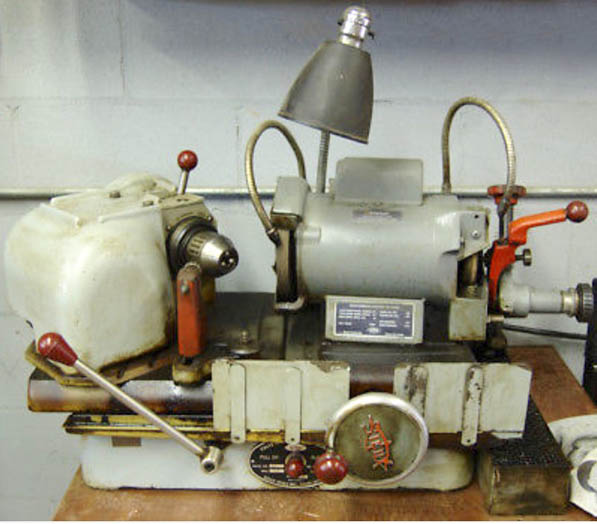 The Sportster’s high dome pistons were ok so a quick hone job and a set of rings finished off the top end. After that you’d think I’d leave the engine alone but I had to have a tin primary cover like the XR750 flat trackers ran.
The Sportster’s high dome pistons were ok so a quick hone job and a set of rings finished off the top end. After that you’d think I’d leave the engine alone but I had to have a tin primary cover like the XR750 flat trackers ran.